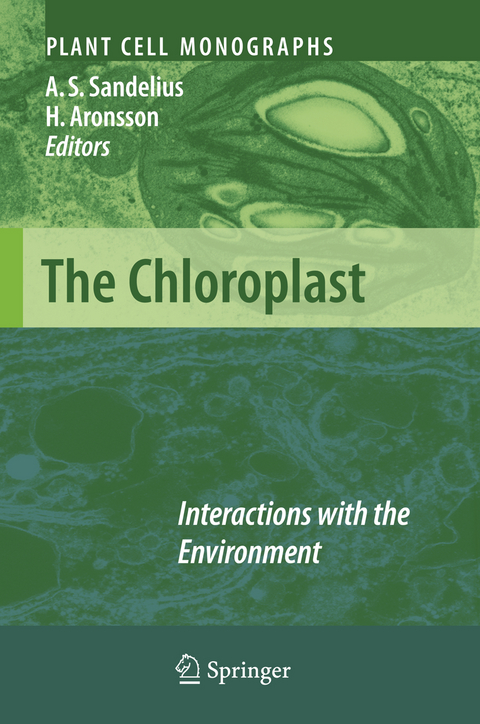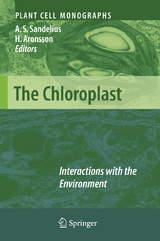The Chloroplast
Springer Berlin (Verlag)
978-3-540-68692-7 (ISBN)
Chloroplasts are vital for life as we know it. At the leaf cell level, it is common knowledge that a chloroplast interacts with its surroundings - but this knowledge is often limited to the benefits of oxygenic photosynthesis and that chloroplasts provide reduced carbon, nitrogen and sulphur. This book presents the intricate interplay between chloroplasts and their immediate and more distant environments. The topic is explored in chapters covering aspects of evolution, the chloroplast/cytoplasm barrier, transport, division, motility and bidirectional signalling. Taken together, the contributed chapters provide an exciting insight into the complexity of how chloroplast functions are related to cellular and plant-level functions. The recent rapid advances in the presented research areas, largely made possible by the development of molecular techniques and genetic screens of an increasing number of plant model systems, make this interaction a topical issue.
Anna Stina Sandelius pursued her PhD degree in Plant Physiology with Prof Conny Liljenberg at the University of Gothenburg. She graduated in 1983 and spent the following year and a half with Prof D. James Morré at Purdue University in West Lafayette, Indiana, USA. She returned to the University of Gothenburg in 1985, where she attained full professorship in 1999. She is presently vice dean of the science faculty. As a graduate student, she studied the role of galactolipids during chloroplast development. She then switched to the plasma membrane and its lipid metabolism and supply, initially focusing on inositolphospholipids. The interest in lipid trafficking brought back plastids as an object of study and, thanks to her group's recent discovery that the plasma membrane uses plastid-synthesized galactolipids to replace phospholipids during phosphate-limiting cultivation, the two objects of study, along with the endoplasmic reticulum, have been brought together in efforts to elucidate lipid trafficking between plastids and the plasma membrane.
Diversity and Evolution of Plastids and Their Genomes.- The Chloroplast Envelope Proteome and Lipidome.- The Chloroplast Protein Import Apparatus, Its Components, and Their Roles.- Chloroplast Membrane Lipid Biosynthesis and Transport.- The Role of Metabolite Transporters in Integrating Chloroplasts with the Metabolic Network of Plant Cells.- Retrograde Signalling.- Plastid Division Regulation and Interactions with the Environment.- Chloroplast Photorelocation Movement.- A Sentinel Role for Plastids.
| Erscheint lt. Verlag | 4.12.2008 |
|---|---|
| Reihe/Serie | Plant Cell Monographs |
| Zusatzinfo | XIV, 300 p. 30 illus., 4 illus. in color. |
| Verlagsort | Berlin |
| Sprache | englisch |
| Maße | 155 x 235 mm |
| Gewicht | 637 g |
| Themenwelt | Naturwissenschaften ► Biologie ► Botanik |
| Naturwissenschaften ► Biologie ► Mikrobiologie / Immunologie | |
| Naturwissenschaften ► Biologie ► Zellbiologie | |
| Schlagworte | cell interactions • Chloroplast • envelope membrane • organelle interactions • photosynthesis • plastid • Protein • Regulation • Transport |
| ISBN-10 | 3-540-68692-4 / 3540686924 |
| ISBN-13 | 978-3-540-68692-7 / 9783540686927 |
| Zustand | Neuware |
| Haben Sie eine Frage zum Produkt? |
aus dem Bereich




